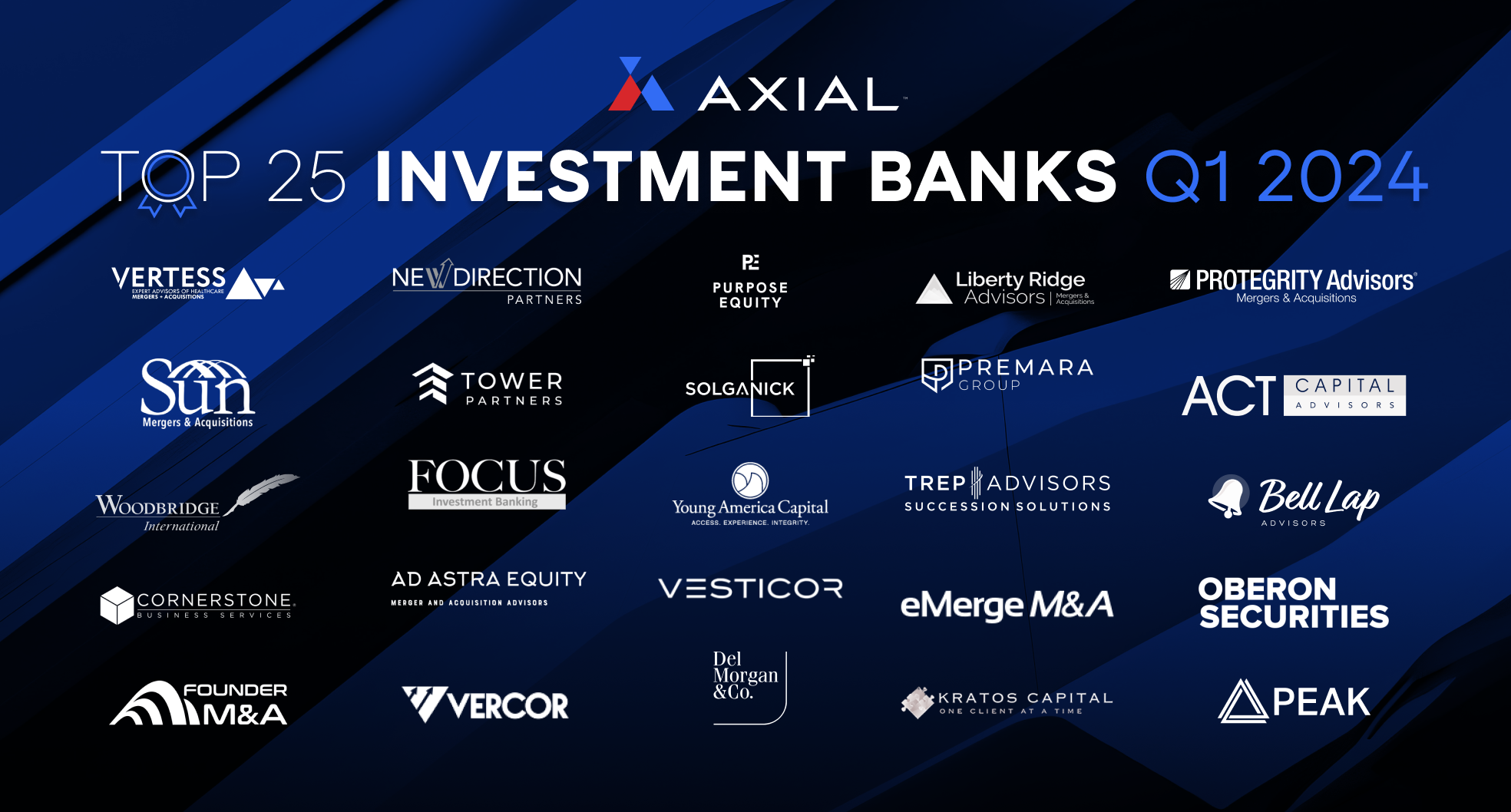
Top 25 Lower Middle Market Investment Banks | Q1 2024
Axial is excited to release our Q1 2024 Lower Middle Market Investment Banking League Tables. To assemble this list, we…
Every M&A advisor has encountered sell-side clients with lofty valuation expectations. “And why not? Most have spent a lifetime building their business, so if we think of the selling price as a report card, it’s no wonder they want to make the honor roll,” says Dexter Braff, president of health care specialist M&A firm The Braff Group.
Unrealistic valuation expectations come about for all sorts of reasons: sellers want to maintain their current standards of living, or they heard about a friend who got a certain price for his company (often regardless of whether it was in the same industry or stage of growth). Lower middle market and middle market business owners are, more often than not, not M&A experts; they usually come to the table with deep industry expertise, but little practical experience when it comes to selling a business.
We asked four advisors to share how they help clients manage valuation expectations during a sale process.

“We approach potential valuation disconnects in several ways. First and foremost, we acknowledge the client’s expectations. Toward that end, we ask how they arrived at their number. Absent documented comps that apply to their businesses and an understanding of individual factors that can detract – or add – to them, it is not at all unusual for clients to make mistaken assumptions here. And rightsizing comes down to a sober explanation of the market as it exists and applies to them.
It becomes trickier when the decision to sell is based largely on an unlikely outcome. Here, we often introduce a concept we call the ‘Goal Price Trap.’ Quite simply, we begin to lay out what would likely need to be done to increase the probability of achieving their goal price. Sometimes, clients are willing to invest time and resources to reach their targets. And for them, we support their decision to delay, and closely monitor their progress to be sure they remain on track. But if they are not, they readjust, rather than fall into the Goal Price Trap and bear the risk that business or sector factors may erode the value of their company over time.”

“We focus on the lower middle-market and work primarily with closely-held and family businesses. Therefore, when they decide to sell, it is typically the one and only time that they are going to go through the process.
Prior to accepting an engagement, we have a very open and honest conversation regarding current market condition and value. We request three to four years of historical financials and current year projections, including owner add-backs to arrive at normalized adjusted EBITDA. We then have a conversation with our clients regarding current market multiples for their business and some possible scenarios, such as contingent payments, earn-outs, management contracts, and bonuses that can be potentially add to the overall value of the business when they sell.
We always want to understand what is driving them to sell. What are their goals and objectives when they made the decision? Yes, you can work another four years or hire someone to run your business, but is that what you want you really what to do?
We also look to provide clients with comparable multiples for similar businesses in revenues and adjusted EBITDA within or around their industry. These multiples come from deals that we have recently completed or from other industry sources we subscribe to or contacts within our network.”
 Tom Schramski, VERTESS
Tom Schramski, VERTESS “Advisors are not always right and sometimes they can be surprised by a higher offer. Experienced intermediaries know that the best deals occur when the strategic interests of the seller and buyer/investor are aligned, which drives higher valuations. While such alignment is sought, it’s hard to predict.
“There are different ways to tactically attain the seller’s goals. For example, successful advisors can craft a definitive agreement to mitigate tax liabilities while increasing the seller’s ultimate proceeds. Keeping the focus on the big picture increases tactical flexibility.
“The very best intermediaries shift from a ‘getting shot as the messenger’ position to an educational role of ‘let’s look at the available market data together.’ This shift empowers the seller and will contribute to a successful engagement, especially when the advisor has to communicate less-than-satisfactory offers between a client and potential buyers.” (Read more about Schramski’s thoughts on the subject here).
 Brooks Crankshaw, The Chicago Corporation
Brooks Crankshaw, The Chicago Corporation “As much as possible, we use empirical evidence to support our view. This evidence comes from many sources, for example, recent comparable transactions. Identifying the comparable, however, is something of an art and is always a point of discussion in addition to the valuation estimate itself. We also use theoretical estimates based on forecasted financial results. In addition to these methods (and others), we rely on our own experience to formulate our conclusions.
At the end of the day, however, the market dictates the selling price. Bankers should expect to have their compensation and reputation aligned with the seller’s objective of maximizing proceeds.”
